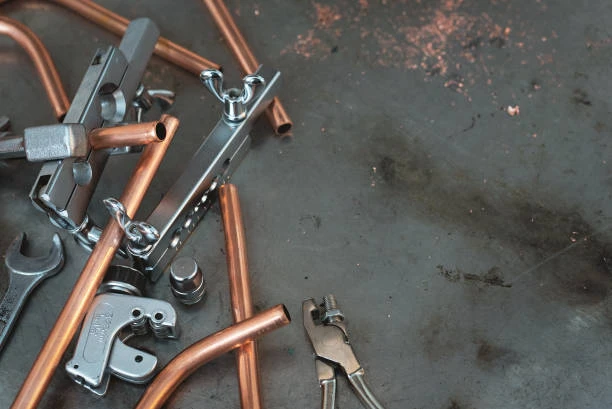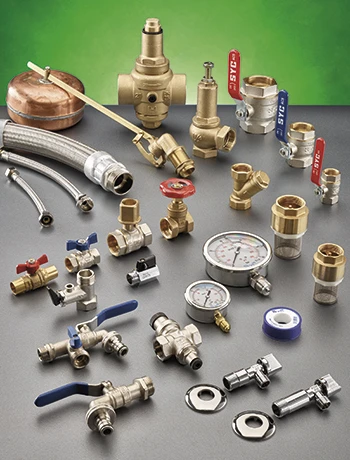Recent concerns regarding lead contamination in drinking water have brought attention to the role of brass fittings in our plumbing systems. While incidents of lead leaching from brass fittings in public drinking fountains have been reported, the greater worry lies in everyday household use. Understanding the implications of lead exposure, the significance of brass fittings, and preventive measures is crucial for ensuring safe drinking water in our homes. This article will explore these topics in depth.
Understanding Brass Fittings and Their Use
Brass fittings are widely used in plumbing due to their durability, resistance to corrosion, and ability to create secure connections between pipes. Typically composed of copper and zinc, many brass fittings also contain small amounts of lead to improve machinability and production efficiency. While these fittings are effective for various applications, the presence of lead poses a serious risk when it leaches into drinking water.
Common Applications of Brass Fittings
Brass fittings are utilized in several key areas:
- Water Supply Lines: Connecting pipes in both residential and commercial settings.
- HVAC Systems: Facilitating the movement of refrigerants and fluids.
- Gas Lines: Used in natural gas and propane systems.
- Irrigation Systems: Essential for agricultural and landscape watering solutions.
Despite their advantages, the potential for lead leaching necessitates careful monitoring, especially in systems used for drinking water.
The Issue of brass fittings Lead Leaching
Lead can leach from brass fittings into drinking water under certain conditions. Factors contributing to lead leaching include:
1. Water Temperature
Hot water can facilitate greater lead leaching compared to cold water. This means that when homeowners use hot water from taps connected to brass fittings, they may be at a higher risk of exposure.
2. pH Levels
Acidic water tends to corrode brass fittings more quickly, increasing the potential for lead to leach into the water supply. The pH of the water is a critical factor in determining the safety of drinking water.
3. Duration of Water Stagnation
When water remains stagnant in pipes for extended periods, it can absorb more lead. This is particularly concerning for households that may not use certain faucets or pipes regularly.
4. Age of Plumbing
Older plumbing systems that contain brass fittings may have higher lead levels due to wear and tear. Homes built before regulations limiting lead in plumbing materials were enacted are particularly vulnerable.
The Impact of Lead brass fittings Exposure
Lead exposure poses significant health risks, particularly for children and pregnant women. Some potential health effects include:
1. Neurological Damage
In young children, even low levels of lead exposure can result in developmental delays, reduced IQ, and behavioral issues. The nervous system is especially vulnerable during early development.
2. Kidney Damage
Chronic exposure to lead can lead to kidney damage in adults, which can result in long-term health complications.
3. Cardiovascular Problems
Lead exposure is linked to increased blood pressure and a higher risk of cardiovascular disease, affecting overall heart health.
4. Reproductive Health Issues
Lead can adversely affect reproductive health, potentially leading to fertility problems and complications during pregnancy.

Drinking Fountains vs. brass fittings Household Use
While reports of lead leaching from brass fittings in public drinking fountains have raised alarms, the daily use of brass fittings in household plumbing presents a more pressing concern. Public drinking fountains often undergo regular maintenance and testing, while household systems may not receive the same level of scrutiny.
1. Daily Exposure
Households use drinking water multiple times a day for cooking, drinking, and hygiene. This frequent exposure heightens the risk of lead absorption in family members, especially in children.
2. Lack of Awareness
Many homeowners are unaware of the potential risks associated with lead in their drinking water. Unlike public facilities, which are more likely to be monitored, individual households may lack the resources for regular testing.
3. Variability in Water Quality
The quality of water can vary widely depending on local plumbing conditions, municipal water supply, and home-specific issues. This variability makes it challenging to assess lead exposure risks accurately.
Preventive Measures for brass fittings Households
To mitigate the risks of lead leaching from brass fitting, households can adopt several preventive measures:
1. Regular Testing
Homeowners should consider testing their drinking water for lead, especially if their plumbing contains brass fittings or if the home was built before 1986, when regulations were enacted to limit lead in plumbing materials.
2. Use Cold Water for Drinking and Cooking
Using cold water for drinking and cooking can minimize lead exposure. Hot water is more likely to leach lead from brass fitting, so it’s best to avoid using it for these purposes.
3. Flush Faucets
Flushing faucets by running cold water for several minutes can help remove any lead that may have leached into the water while sitting in the pipes. This practice is especially useful after extended periods of non-use.
4. Replace Old Plumbing
If feasible, replacing older brass fitting and plumbing with lead-free alternatives can significantly reduce the risk of lead exposure. Options include stainless steel, plastic, or lead-free brass fitting.
5. Educate Family Members
Raising awareness about the potential risks of lead exposure can empower family members to make informed choices about their drinking water usage and plumbing maintenance.
Conclusion brass fittings
The issue of lead leaching from brass fittings in drinking fountains highlights a significant public health concern, but the greater risk lies in daily household use. Understanding the implications of lead exposure, the importance of testing and maintenance, and the available preventive measures can help ensure the safety of drinking water in our homes. By taking proactive steps, homeowners can protect their families from the dangers of lead and create a safer living environment.
brass fittings FAQs
1. What are brass fitting?
Brass fitting are plumbing components made primarily of copper and zinc, often containing small amounts of lead to enhance their machinability and durability.
2. How can I test my water for lead?
You can test your water for lead by using home testing kits available at hardware stores or by contacting your local water authority for testing services.
3. What are the health risks of lead exposure?
Lead exposure can cause neurological damage, kidney damage, cardiovascular issues, and reproductive health problems, particularly in children and pregnant women.
4. How can I reduce lead exposure from my plumbing?
To reduce lead exposure, use cold water for drinking and cooking, flush your faucets regularly, and consider replacing older brass fitting with lead-free alternatives.
5. Are there regulations regarding lead in plumbing?
Yes, regulations enacted in the U.S. in 1986 and in many other countries limit the amount of lead in plumbing materials, but older systems may still pose a risk. Regular testing and maintenance are essential for safety.


















